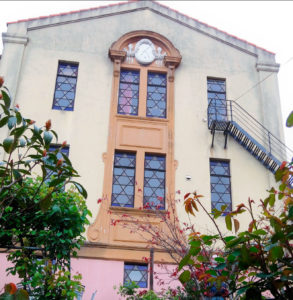Auckland and Wellington
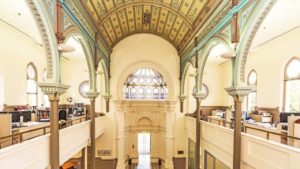 In 1840, David Nathan, along with about a dozen other Jewish storekeepers and traders, founded the Auckland Jewish community in northern New Zealand.
In 1840, David Nathan, along with about a dozen other Jewish storekeepers and traders, founded the Auckland Jewish community in northern New Zealand.
The congregation met to worship together as they conducted services and various other religious functions. On October 31, 1841, Nathan wed Rosetta Aarons in Kororareka, making history as the first Jewish marriage in New Zealand. In Auckland, a synagogue building was designed in 1884-85 and opened on 9 November 1885. The building still stands at 19A Princes Street, has heritage protection, and is now known as University House. The community moved to larger premises at Greys Avenue in 1967.
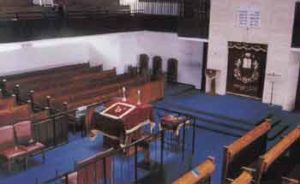 The second major hub of New Zealand Jewish life in the 1800s was just south in Wellington. Very similar to Auckland, Wellington originally attracted traders. The first Jew to arrive was Abraham Hort, Jr. in 1840. He was followed by Abraham Hort, Sr. in 1843, who went to New Zealand hoping to found a community and promote planned immigration to relieve Jewish poverty in England. He founded the Wellington Hebrew Congregation in 1843 and, on January 7, the first Jewish service was held in Wellington. The first synagogue in Wellington was Beth El, established in 1870 at 222 The Terrace.
The second major hub of New Zealand Jewish life in the 1800s was just south in Wellington. Very similar to Auckland, Wellington originally attracted traders. The first Jew to arrive was Abraham Hort, Jr. in 1840. He was followed by Abraham Hort, Sr. in 1843, who went to New Zealand hoping to found a community and promote planned immigration to relieve Jewish poverty in England. He founded the Wellington Hebrew Congregation in 1843 and, on January 7, the first Jewish service was held in Wellington. The first synagogue in Wellington was Beth El, established in 1870 at 222 The Terrace.
By the 1920s, this wooden building with a capacity of 200 was too small for the city’s 1400 participants and a new brick building was built on the same site and opened in 1929. The site was required to be vacated for motorway construction in 1963, and a new Wellington Jewish Community Centre was opened at 74-80 Webb Street in 1977.
In 1848, in New Zealand’s total population of 16,000 there were known to be at least 61 Jews, 28 in Wellington and 33 in Auckland. Immigration has led to four main groups: older families who came from the United Kingdom in the 1800s, lineage of European refugees from the 1930s and 1940s, families who emigrated from Britain in the 1950s, and recent immigrants from South Africa, Israel and the former Soviet Union. Today, the Jewish population, estimated at around 7,500. The majority of New Zealand’s Jews reside in Auckland and Wellington on the North Island. Synagogues continue to be considered the center of Jewish communities in New Zealand. Auckland and Wellington each have two congregations, one Orthodox and the other Liberal Progressive.
Christchurch
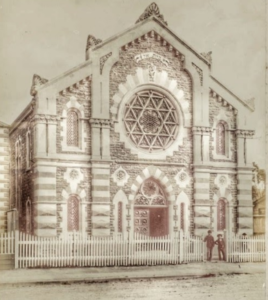 James Cook discovered New Zealand in 1769 and it was largely at the instigation of Joel Samuel Polack, the first Jewish settler in New Zealand in 1831, that the British decided to establish sovereignty over New Zealand. The first Jewish settlers arrived in the South Island Canterbury province in the early 1860’s and under the leadership of Louis Edward Nathan began holding regular services at his home in Christchurch.
James Cook discovered New Zealand in 1769 and it was largely at the instigation of Joel Samuel Polack, the first Jewish settler in New Zealand in 1831, that the British decided to establish sovereignty over New Zealand. The first Jewish settlers arrived in the South Island Canterbury province in the early 1860’s and under the leadership of Louis Edward Nathan began holding regular services at his home in Christchurch.
He established the Canterbury Hebrew Congregation, and in 1864 the congregation of 30 people obtained a government grant of £300 to build a wooden synagogue in Gloucester Street. The exodus caused by a gold rush almost caused the congregation to collapse, but the Jewish diggers and traders returned in 1870, bringing with them their minister Isaac Zachariah, who served the community until 1886.
The community flourished under the leadership of Phineas Selig: kosher meat was supplied locally from 1933; a welfare society was founded in 1938; a social club in 1940, and women’s synagogue membership was inaugurated in 1942. From 1930 to 1958 Jerusalem-educated S.N. Salas of Auckland was minister. A small number of immigrants of German and Polish origin came in the 1930’s and 1940’s.
The wooden synagogue was replaced in 1881 by a brick and stone edifice on the same site, which served the Canterbury Hebrew Congregation until 1987, when it could no longer be maintained in good repair. In May 1988 the community consecrated the present synagogue and hall in Durham Street, which incorporates some of the outstanding features of the old building, including a large stained glass Star of David window, and the original wooden bimah. In 1967 there was a Jewish population of 330. According to the 1986 census, there were 129 Jews in Christchurch; however, since then their number has increased and in the 2000s according to the 2001 census and more recent reckonings it was estimated at about 650 Jews in for the entire area of Canterbury.
Nelson
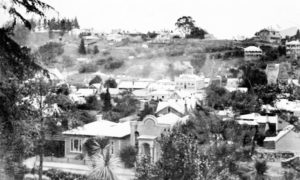 Hyam Davis yearned to build a synagogue as soon as he had arrived in Nelson and purchased property at the corner of Nile Street and Trafalgar Square. A wooden synagogue, was built, which David M. Isaacs dedicated in 1869. About 80 feet long by 30 feet wide, it was almost an exact but smaller replica of the synagogue at Hokitika, with Corinthian pillars and lead-light windows. One by one the Jewish families, left the settlement and, when the total Jewish population in the province dwindled to less than forty men, women and children, it was never opened again to the public. The synagogue was pulled down in 1917.
Hyam Davis yearned to build a synagogue as soon as he had arrived in Nelson and purchased property at the corner of Nile Street and Trafalgar Square. A wooden synagogue, was built, which David M. Isaacs dedicated in 1869. About 80 feet long by 30 feet wide, it was almost an exact but smaller replica of the synagogue at Hokitika, with Corinthian pillars and lead-light windows. One by one the Jewish families, left the settlement and, when the total Jewish population in the province dwindled to less than forty men, women and children, it was never opened again to the public. The synagogue was pulled down in 1917.
Dunedin, Hokitika, and Timaru
Seven synagogues were erected in New Zealand between 1865 and 1885. Today there are synagogues in the four main centres, the congregation in Dunedin being the most southern in the world.
Three synagogues, established at Nelson, Hokitika, and Timaru, are no longer in existence.
There is an estimated 1,000 or so Jews on the South Island.
